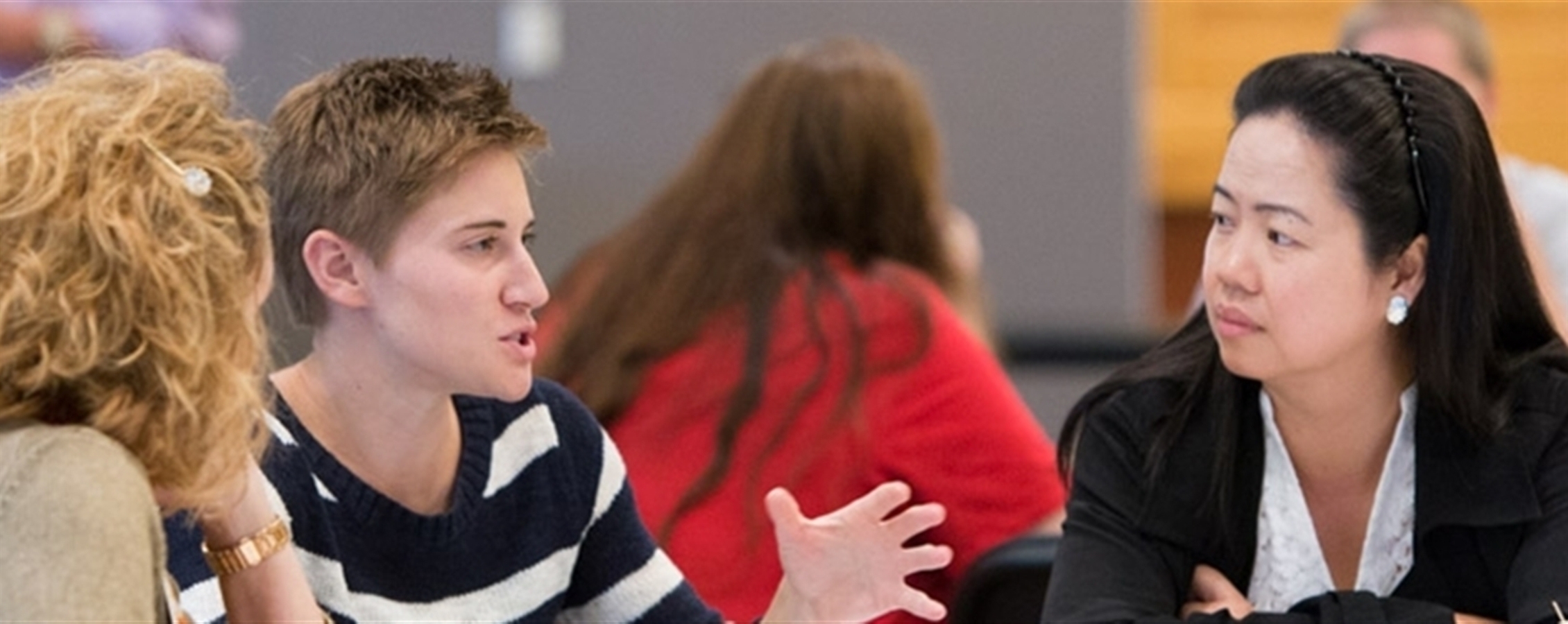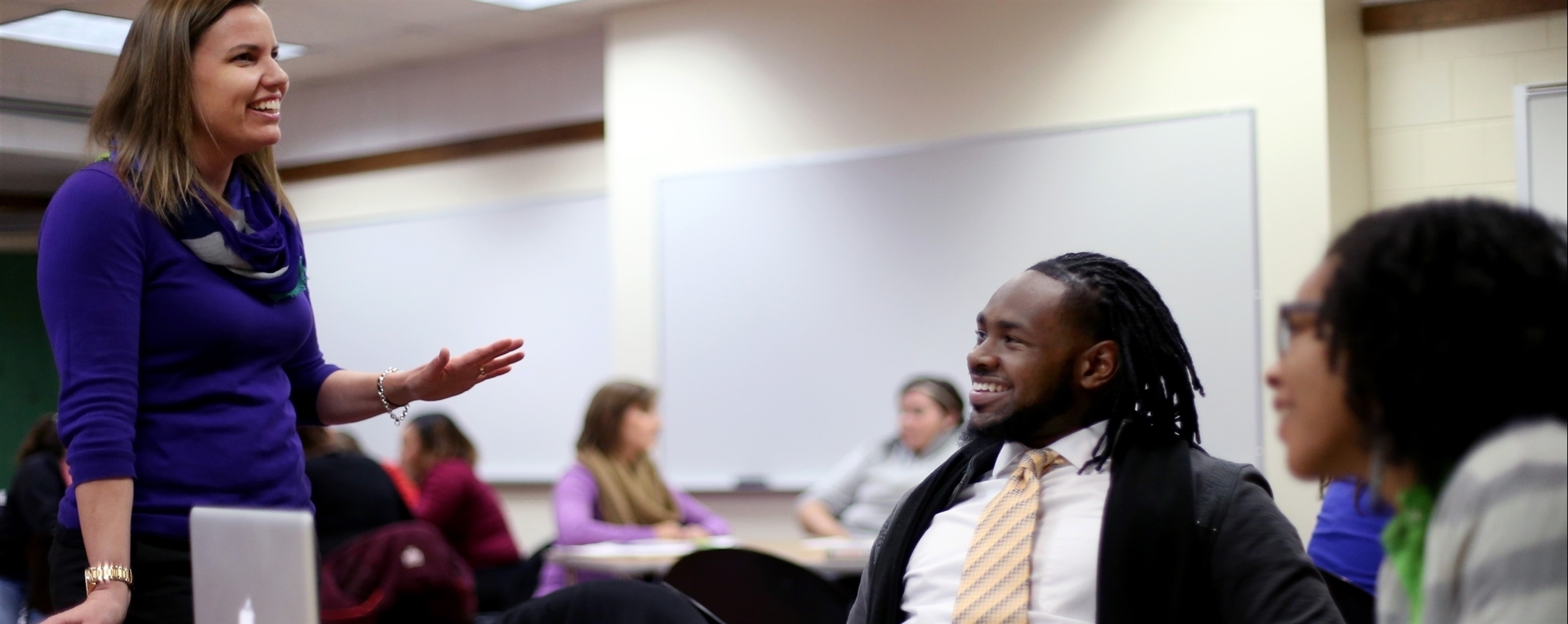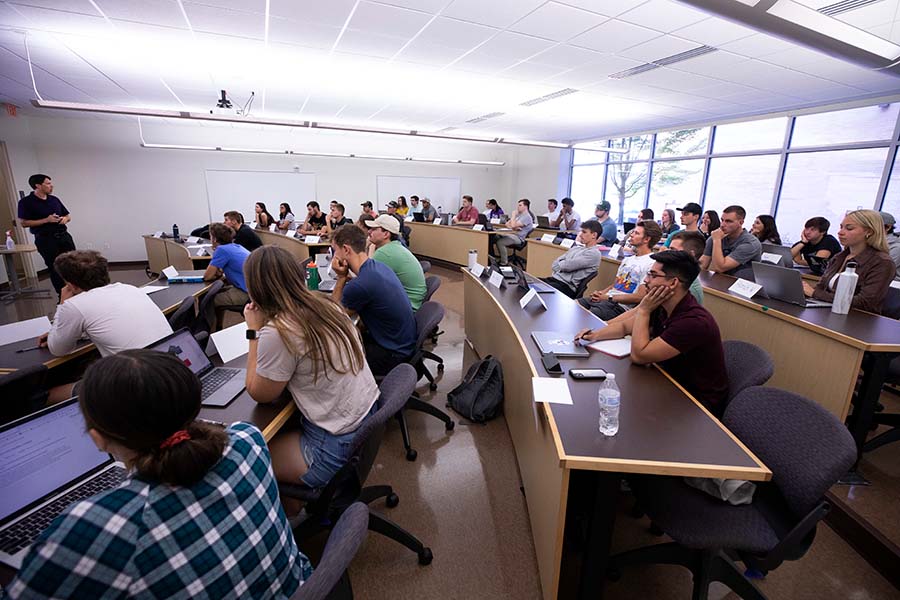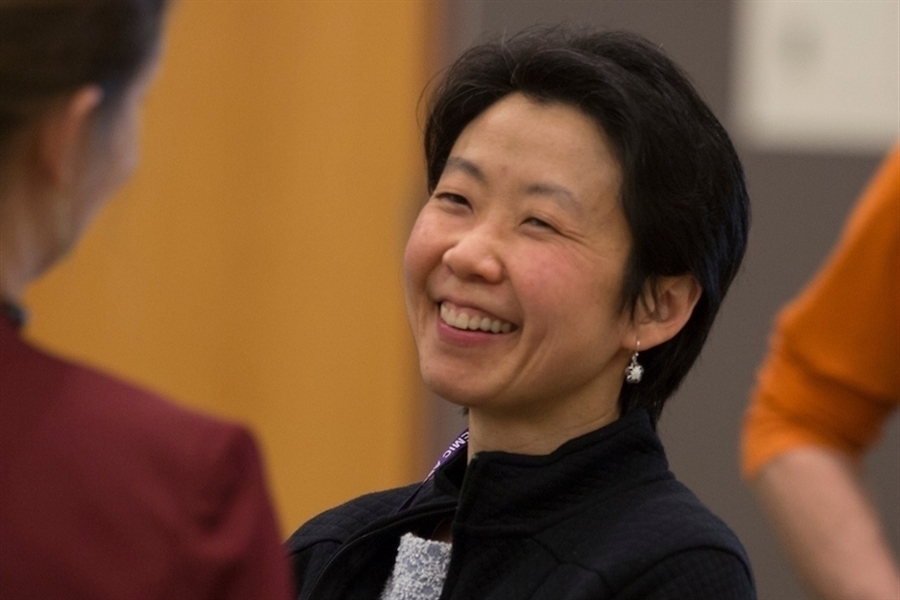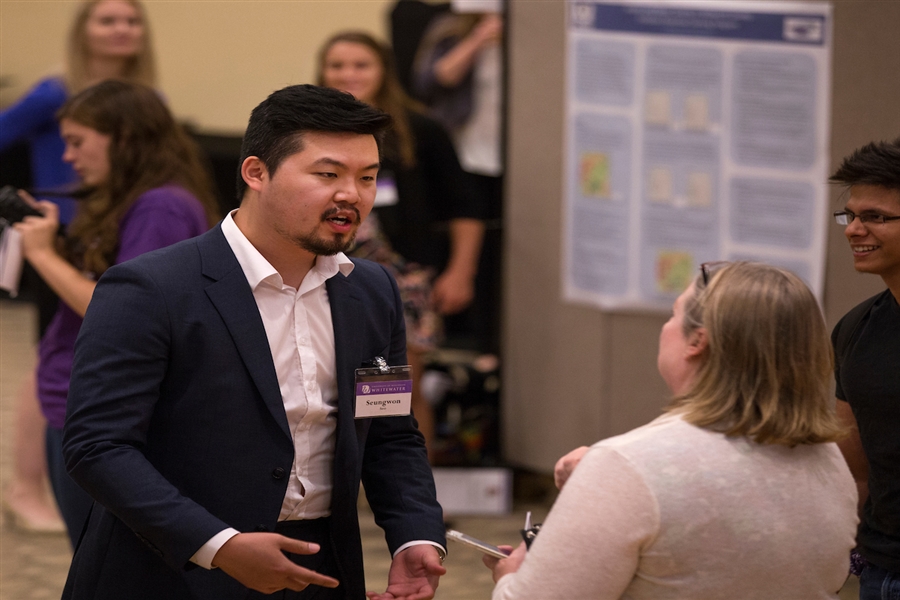Teaching Large Classes
78 Strategies for Teaching Large Classes
Personalize the class
- Become acquainted with as many of the students as possible
- Have a seating chart
- Arrive at class early to greet students as they enter and answer any questions
- Call roll call during the first few classes
- During exchanges with students (in and out of class) begin by asking students to identify themselves by name
- When a student asks a question, move closer to that student when answering it
- Return students' work with personalized comments, suggestions, invitations to review work during office hours, etc.
- Hold office hours
- Hang a sign-up sheet outside of your office to allow students to block off time to meet during office hours
- Encourage students to come to office hours in groups to minimize the number of times you have to answer the same questions
- Emphasize willingness to talk with students, answer questions, etc.
- Ask students to complete a questionnaire or information card including their: identifying information, likes/dislikes, challenges, expectations for the class, etc., and use information to personalize lectures
- Use a cordless microphone while lecturing
- Conduct mid-term teaching evaluations or simply ask the students for suggestions
Promote active learning
- Incorporate a variety of teaching methods (e.g., student led seminars, team assignments)
- Incorporate 20-minute energy shifts into the course
- Use visual reinforcement to enhance learning
- Use interactive lectures
- Ask questions
- Encourage students to ask questions
- Use small groups
- Encourage problem-solving and critical thinking
- Include whole class debates, role playing activities, and/or simulations
- Encourage brainstorming
- Have speakers
- Encourage students to turn in written questions; discuss answers during the first ten minutes of the next class
- Offer extra credit for submitting questions based on quantity and quality of questions
- Encourage peer feedback
Promote class participation
- Ask questions that require a show of hands
- Ask direct questions
- Use surveys
- Use dyads
- Use triads
- Use small groups
- Use the "think-pair-share" technique
Think—the instructor poses a question and allows the students to think individually for a few seconds
Pair—the students discuss their thoughts about the subject with the person sitting next to them
Share—the pairs share their responses with the rest of the class
- When using groups, each member of the group should understand that they are responsible for the other members of the group
- Stop in the middle of a lecture to have students paraphrase a principle or definition or summarize what has just been said
- Have students answer questions or present material in groups of two or three
- Call on students or groups of students in the back of the lecture hall so they know they cannot hide from you
- Encourage/require students work with new people as the semester progresses
- Ask open-ended questions
- Ask questions that require students to make judgments and choices
Ideas for Alternative Teaching Methods
- Student led seminars
- Team assignments
- Brainstorming
- Audiovisual methods
- Speakers
- Class debates
- Role playing
- Use small groups
- Use computer-based instruction
- Link information to students' prior knowledge
Lecturing
- Provide an outline of the main points of the lecture
- Include no more than four or five main points in 50-minute period
- Begin by posing a question or an example
- Clearly delineate major points verbally ("The next point is…") or nonverbally (stand by the lectern for major points, relax posture for elaboration).
- Write out unfamiliar terms or names or references on the board or transparency
- Intersperse concrete examples of general concepts for clarification
- Summarize main points at the end of the presentation
- Give students time to think, and genuine opportunities to respond
- Exhibit enthusiasm for the topic and information
Incorporate Writing Assignments
- Require students to write "minute-papers" in response to a question about assigned reading for that day, to ask a question, to state a concern, etc. (This eliminates the need to take attendance or grade quizzes and encourages timely reading of assignments.)
- Provide clear guidelines for the assignment
- Make grading policies explicit
- Provide written instructions regarding due dates and return dates
- Return writing assignments promptly
- Discuss papers of higher quality in class with the aid of an overhead projector
- Have students work in groups to reduce the number of assignments that need to be graded
- Do not count grammar, mechanics, and organization
- Assign "satisfactory" or "unsatisfactory" grades
Organization
- Ask students to choose a row for the term and sit in that row when taking exams, turning in assignments, or collecting returned materials
- Use manila envelopes labeled with row numbers to collect and return materials
- Organize materials to be returned alphabetically.
- Put policies and procedures for grading, attendance, late homework, missed tests, etc. in writing and hand them out on the first day (class syllabus)
- After teaching the class for several semesters, consider having lecture notes duplicated, bound, and sold as required course materials. Then teach the main points, and require students to read the lecture notes to fill in details and clarify main points.
- Create FAQ sheets
- Encourage students to ask questions via email, and then respond to the whole class if appropriate
- Prepare spreadsheets for recording homework and test grades.
Teaching Large Classes--Sources
Books
Carbone, L. (1998). Teaching large classes: Tools and strategies (Vol. 19). In P.
Labella (Series Ed.) Survival skills for scholars. Thousand Oaks, CA: SAGE Publications.
Enerson, D. M., Johnson, R. N., Milner, S., & Plank, K. M. (1997). The Penn State
teacher II: Learning to teach, teaching to learn (2nd ed.). University Park, PA: Center for Excellence in Learning and Teaching, Pennsylvania State University.
Gibbs, G., & Jenkins, A. (Eds.). (1992, January 1). Teaching large classes in higher
education: How to maintain quality with reduced resources. Herndon, VA: Stylus Publishing.
MacGregor, J., Cooper, J. L., Smith, K. A., & Robinson, P. (Eds.). (2000). Strategies
for energizing large classes: From small groups to learning communities. San Francisco, CA: Jossey-Bass.
Articles
Barkham, J., & Elender, F. (1995, June). Applying person-centered principles to
teaching large classes. British Journal of Guidance & Counseling, 23 (2), 179-197.
Bauer, H. H., & Snizek, W. E. (1989, July). Encouraging students in large classes to
ask questions: Some promising results from classes in chemistry and sociology. Teaching Sociology, 17 (3), 337-340.
Chism, N. V. (1989, June 1). Large enrollment classes: Necessary evil or not
necessarily evil? (Report # 20444-361). Columbus, OH: Center for Teaching Excellence. (ERIC Document Reproduction Service No. ED 334 875)
Christianson, R. G., & Fisher, K. M. (1999, July). Comparison of student learning
about diffusion and osmosis in constructivist and traditional classrooms. International Journal of Science Education, 21 (6), 687-698.
Cooper, M. M. (1995, February). Cooperative learning: An approach for large
enrollment courses. Journal of Chemical Education, 72 (2), 162-164.
Doran, M. S., & Golen, S. (1998, March-April). Identifying communication barriers to
learning in large group accounting instruction. Journal of Education for Business, 73 (4), 221-224.
Gilbert, S. (1995, Winter). Quality education: Does class size matter? (Report #
BBB20392). Ontario, Canada: Canadian Society for the Study of Higher Education. (ERIC Document Reproduction Service No. ED 421 026)
Goetz, E. T., Alexander, P., & Burns, C. W. (1983, January 1). Elaborative strategies:
Promises and dilemmas for instruction in large classes. College Station, TX: Texas A & M University. (ERIC Document Reproduction Service No. ED 243 073)
Lee, V. S., & Williford, L. E. (1997, March 1). Differences in African-American and
White students' perceptions of the postsecondary large class. Chapel Hill, NC: University of North Carolina at Chapel Hill. (ERIC Document Reproduction Service No. ED 410 780)
Litke, R. A. (1995, February 1). Learning lessons from large classes: Student
attitudes toward effective and ineffective methods in large classes. Northridge, CA: Department of Speech Communication at California State University. (ERIC Document Reproduction Service No. ED 384 088)
North Carolina State University. (1997). Beating the numbers game: Effective
teaching in large classes. [On-line]. Available World Wide Web: http://www2.ncsu.edu/unity/lockers/users/f/felder/public/Papers/Largeclasses.htm
Oakley, M., & Hensley, T. R. (1998, March). The challenge of the large lecture class: Making it
more like a small seminar. PS: Political Science & Politics, 30 (1), 47-51.
Papo, W. D. (1999, September). Large class teaching: Is it a problem to students? College
Student Journal, 33 (3), 354-357.
Scheck, C., et al. (1994, November-December). The effect of class size on student
performance: Development and assessment of a process model. Journal of Education for Business, 70 (2), 104-111.
Stanford University. Checklist for effective lecturing. [On-line]. Retrieved April 23, 2001 from
the World Wide Web: http://ctl.stanford.edu/teach/handbook/chklstefflec.html
University of California-Santa Barbara. (1998). Teaching large classes at UCSB. [On-line].
Available World Wide Web: http://www.oic.id.ucsb.edu/Resources/Teaching/Large.ucsb.html
Do you have ideas for books, workshops, or other types of programs? Are you interested in participating in panels or facilitating sessions? We'd love to hear your suggestions! Please follow this link to a short form to enter your ideas. The LEARN Center director or staff will follow-up on all suggestions via email.

